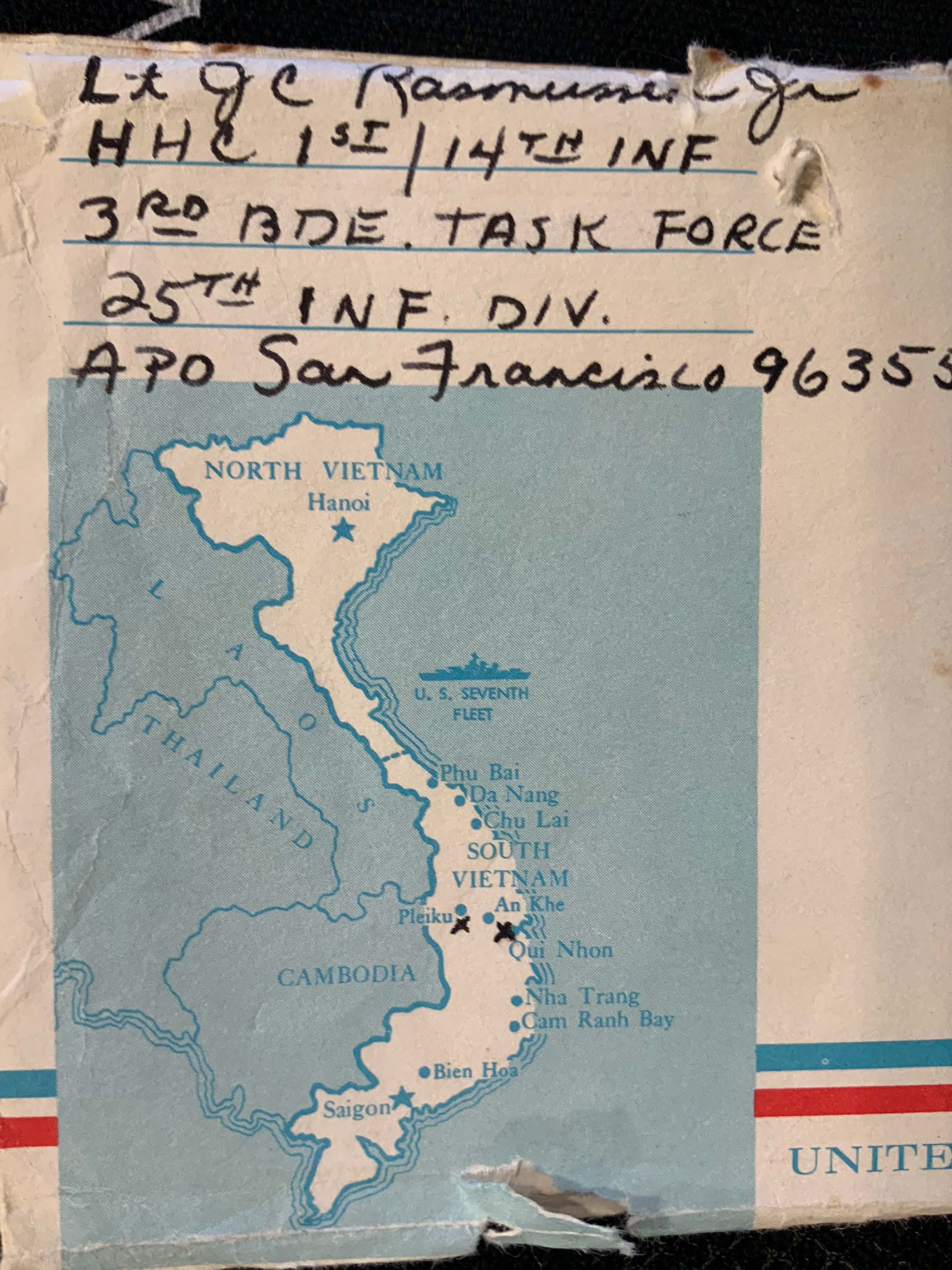18 March 1967 [letter to brother William Rasmussen to spare his mother its content—mention of a threat that the command post would be overrun—possibly making this letter his last letter]:
“It’s 11 o’clock & all’s well. We captured a North V. officer today, who claimed the CP was going to be attacked so we’re on 50% alert. I’ll probably be up most of the night making sure my men on guard stay awake. We can’t really say whether this guy was captured or surrendered, because he was walking around out in the open when we got him. If he gave himself up, then there might be a point in taking him seriously. Anyhow, he’s from the North V. regiment we’ve been chasing around here for 2 months. We’ve had only small local action lately. We’ve had 155 rounds coming over our heads all night & hitting down in the valley & our own 105’s [howitzers] have been firing into the hills. I think we’ll have a piece of Charley’s ass if he tries it.“
"A few days ago they brought in a VC with half of his wrist shot off for us to treat, so he could be taken back for interrogation. He was the sorriest looking VC I have yet to see. He was emaciated as hell, with rotting feet, & covered with flies. It makes you wonder what we’re fighting. We gave him some morphine which didn’t seem to help as he was typically ‘doped up.’ I believe if I hadn’t been around, my people would have killed him—especially the guys who have been over here a while. He certainly thought we were. I didn’t make any friends with the chopper pilots, by calling a ‘medevac’ helicopter for him.“
"Well, here come some jets. Usually they don’t fly at night.“
"We’re in one of the priority zones (the Qui Nhon area) for this year, so I think we’ll be here for a while. The others are the delta, Saigon area, & the DMZ. We’re attached to the 1st cav. div. now & also have a Korean division working with us. The Koreans are excellent—I guess they have a motive for revenge. They’re different in appearance from the Vietnamese—much taller & stocky. And they’re karate experts; Charlie is terrorized of them. Perhaps we can rehabilitate this country like we did [with] South Korea, but the South Vietnamese have always been much more lazy than the Koreans….“
"P.S. Nothing ever happened last night.”
19 March 1967:
“… [I] haven’t been overworked, due to our light casualties for the past several months. I’m fortunate in having some real fine medics & the battalion surgeon is excellent—he’s taught me a lot already. In fact, one of my boys is in for the silver star for dragging two men out of a cave under fire & saving the life of one. This battalion has the highest kill ratio of any unit over here (except the Koreans) & in my opinion is as good as any we have….”
20 March 1967:
“… Most people here carry a pistol because our rifles are not as reliable as the old ones, but are superior overall—for this type of war. You can ship anything [pistol ammunition] if you pack it right. No one is supposed to have a personal weapon over here, but everyone does. I suggest you ship some of the shells with each shipment of food you send me….“
"I made 1st L[ieutenan]t last week—they got it for me a week early. The col[onel] gave me a new set of bars.”
27 March 1967:
“… As you can see from the pictures, 'Damnit' has grown a good bit. He’s a most unusual dog. He won’t eat dog food (they feed the scout dogs Gaines meal etc.). He prefers the chicken & turkey 'C' rations to the beef & likes it slightly heated. When he wants water, he either paws a water can or picks up a cup & tosses it in the air or brings it to me (he’s not quite 3 months old yet). He’s a pretty typical Vietnamese dog.“
"We’ve finally got some VC cornered a good way off down in the valley. They didn’t run this time probably because South V. troops spotted them & attacked. At the moment, most of our btn. & some of the last cav. div. are down there with the South V. now. They’re well fortified & have already killed a lot of South V. (including their U.S. advisor) so we may have us something. It just dawned on me that since I’ve been here, the btn. has killed over 160 VC & I don’t believe we’ve lost 5 men, which is why we’ve got the highest kill ratio. I consider myself fortunate to be with this btn."
"P.S. A 6 foot cobra snake crawled into a bunker this evening & got himself immediately shot. I’m glad I’m sleeping on a cot & ‘Damnit’ sleeps in my tent.”

